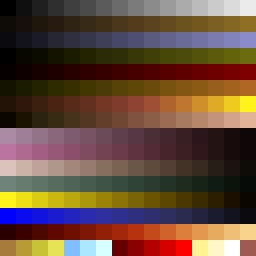Quote from: mazhat on July 10, 2018, 04:22:02 AMThank you very much! And I am indeed crazy haha
You are crazy dude, this is awesome.
Quote from: mazhat on July 10, 2018, 04:22:02 AMYup, this is entirely from scratch. Since the calculator has no GPU it's all software rendered. The source code is on my github, but it's in kind of an awkward state since I'm doing lots of refactoring.
I haven't been here to see the whole thread,
but is this all from scratch?
What libraries did you use?
This fascinates me to no end.





 [/spoiler]
[/spoiler] So I'm looking at releasing a playable demo in September. I'll make a post shortly with what my development goals are by then! I've been making a lot of structural changes to the engine since it's now written in C++ rather than C. This left 35k lines of code to be refactored... so I'm trying to balance adding new features with cleaning up what's there.
So I'm looking at releasing a playable demo in September. I'll make a post shortly with what my development goals are by then! I've been making a lot of structural changes to the engine since it's now written in C++ rather than C. This left 35k lines of code to be refactored... so I'm trying to balance adding new features with cleaning up what's there.

 [/spoiler]
[/spoiler]

 [/spoiler]
[/spoiler] [/spoiler]
[/spoiler] [/spoiler]
[/spoiler]
 [/spoiler]
[/spoiler] [/spoiler]
[/spoiler] [/spoiler]
[/spoiler] [/spoiler]
[/spoiler]